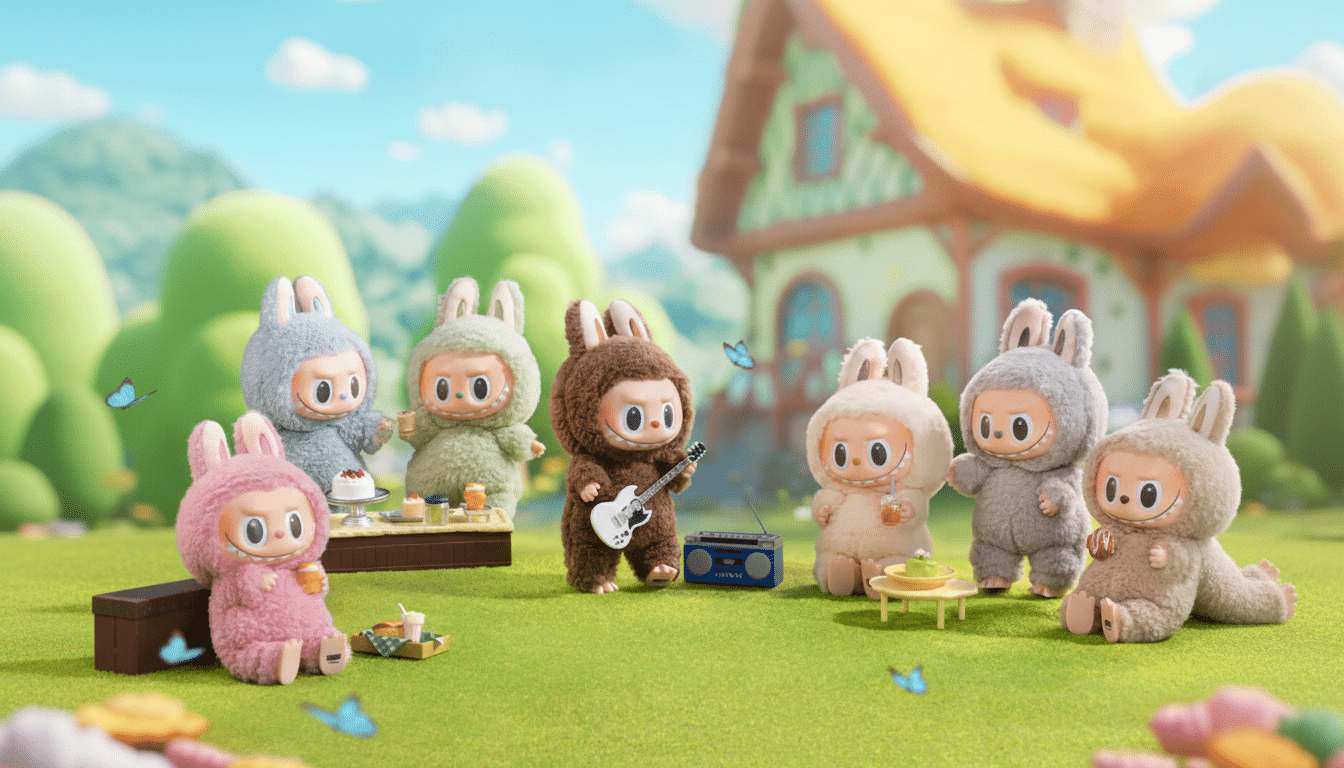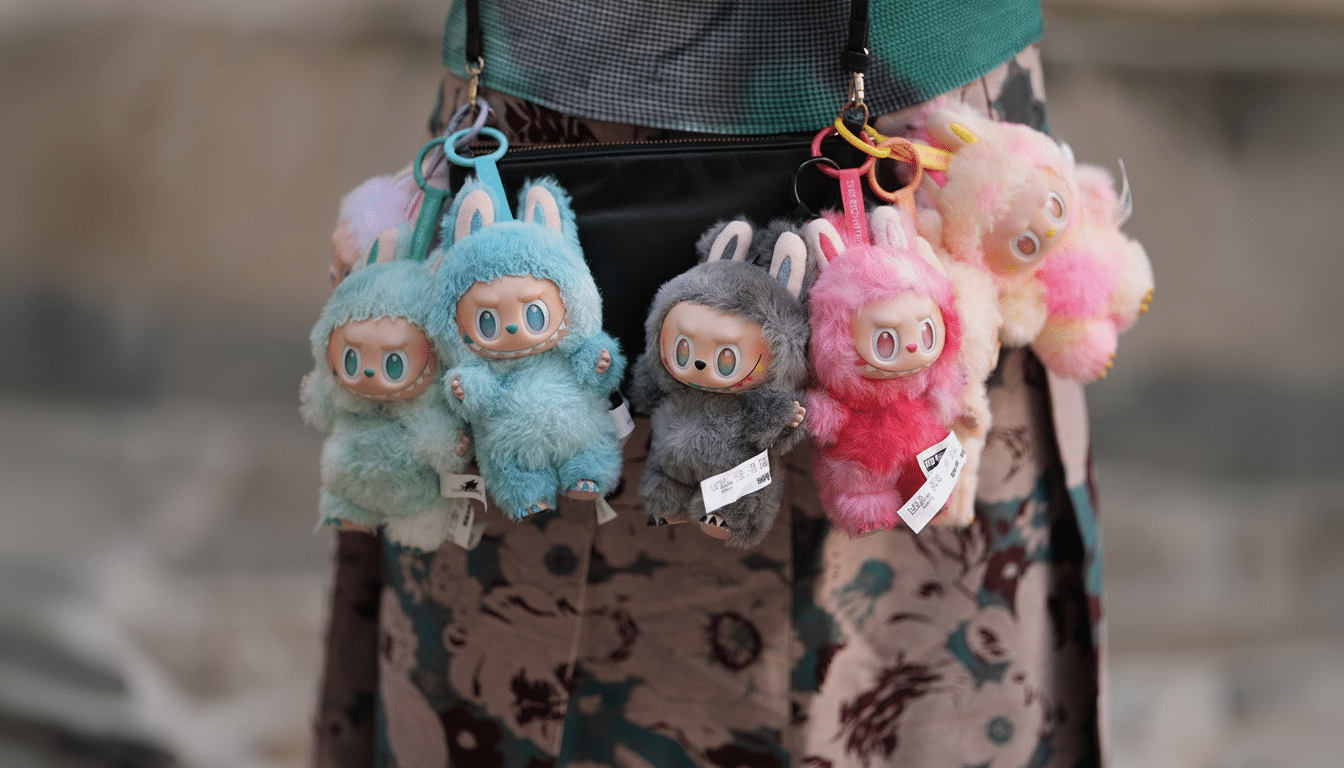Pastels are back to frolic on the city streets; scalloped edges are curling through interiors; and tiny horned creatures known as Labubus dangle from tote bags and phone straps. What might seem like a sugary fad is actually the latest venture of Rococo revival, a palette reset based on lightness, playful excess and a splash of theatricality.
Rococo, the 18th‑century style that was invented in French salons, celebrated curving lines, shells and flowers, asymmetry and a palette of mint, blush and sky. Swap the gilded boiserie for bow-trim cardigans and pearl-studded hair clips, and today’s translation is complete: soft power through ornament and joy.

Why the Rococo mood feels right now for style and design
After years of clean lines and “quiet luxury,” consumers are hungry for sweetness and story. WGSN’s trend forecasters have called out the proliferation of “soft play” aesthetics, and on the Lyst Index, searches for bows, rosettes and corset detailing feature prominently — design codes with evident Rococo DNA.
On social platforms, the coquette aesthetic and visuals from the Regencycore movement provided an on-ramp to frills and pastels. Pinterest’s trend team has made it official, calling it a “Rococo Revival,” and noting that their end-of-year predictions have historically been fairly spot-on. The appetite is not just visual; it’s emotional — a corrective to feed fatigue and a hall pass for delight.
Thus, in economic terms, the return of occasion dressing pushed wardrobes away from the embrace of athleisure and toward that windswept monstrosity known as embellishment. Industry reporting suggests that there’s pent‑up interest in dressing up and reveling in celebration wear (read: corseted bodices, flounced skirts and pearl trims) trickling down from couture to mass market.
The Labubu effect and its influence on Rococo revival
Labubu — designed by artist Kasing Lung and popularized by the blind-box ecosystem of POP MART — is more or less the unofficial mascot of this moment. The character’s candy-colored tones, impish grin and never-ending parade of limited editions transform ornament into a wearable mood, clipped to handbags the way 18th‑century fans or chatelaines once telegraphed taste.
The designer-toy universe provides Rococo’s frivolity with effective contemporary propulsion: scarcity drops, collectibility and community. POP MART has grown rapidly, with flagships and pop‑ups all over Asia and North America, and lines around city blocks for new series. Labubus operate as wearable decor — status-laced, completely impractical and unapologetic about it.
The feedback loop is potent. Fashion brands are pursuing the same audience with pastel capsules, bowed footwear, pearl-trim knits and fans will add a character charm to finish off the look. It’s ornament upon ornament, the modern equivalent of shellwork piled over silk and lace.
Where the Rococo-inspired trend is showing up now
On the runways, brands famous for romance — Simone Rocha, Sandy Liang and Shushu/Tong among them — have normalized frothy tulle, rosette corsages and puffed sleeves. Jewelry dips down to cameos and pearls, and the shapes of shells, nodding to the rocaille — Rokoko in German — that provides Rococo with its name.

Interiors reflect the turn: hand‑painted florals, plaster swags, cabriole‑leg furniture and de Gournay‑style wallcoverings are popping up in editorial spreads and home tours. The first “grandmillennial” wave invited it inside; Rococo comes with even more asymmetry, more scrollwork and bright, sherbet color stories.
Search and shopping data support it. Pinterest has seen spikes for searches related to bow decor, pearl nails and ornate tablescapes; resale platforms have reported jumps in vintage gilt mirrors and shell-shaped lamps. The look is no longer niche; it’s patterning across categories.
How To Adopt It Without Wearing a Costume
Begin with palette: pistachio, powder blue, butter yellow and petal pink chorus Rococo. Add one motif — shells, rosettes, ribbon bows — then double down on texture with tulle, organza or pointelle knits.
Accessories do heavy lifting. A pearl choker, scalloped bag or — yes — Labubu charm can push a look toward playful opulence without straying into cosplay. At home, a gilt mirror or floral sconce brings in the curve and shine that characterize Rococo without completely overhauling one room.
Secondhand markets are ripe with period-adjacent finds — ornate frames, porcelain florals, carved side tables — which makes the trend both eco-friendly and budget-conscious. The secret is asymmetry and softness: Allow the lines to swirl, and the colors to whisper.
A Historical Echo, Created With Modern Tools
Rococo, after all, thrived in intimate spaces: salons, boudoirs, and private theaters where wit and flirtation counted as much as craft. Today’s equivalent is the individual screen. Algorithms reward charm, micro‑details and collectible drops; creators reward the viewers with froth, bows and close-up ornament.
That’s why this comeback feels bigger than pastel paint. It’s a cheekier, less serious ethos after the seriousness of rigidity; of curl after straight line. From couture rosettes to a Labubu bobbing up from a backpack, the message is clear: whimsy isn’t something for which you feel guilty about giving space; it’s a design strategy.
And anyway, the curve — of a shell, a sleeve, a smile — has rarely seemed so up-to-date.

